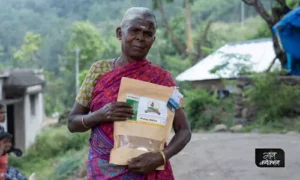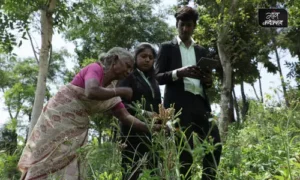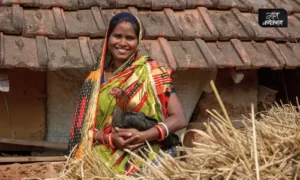Panna, Madhya Pradesh
The inhabitants of Bilhata, Katahari and Koni, tribal villages that lie within the Panna Tiger Reserve in Madhya Pradesh, ensure that their time to collect water from the jhiriya, a local water source, does not coincide with the time the tigers, leopards and bears come there to quench their thirst.
“The water we collect from the jhiriya is the only one that the four hundred odd Adivasi villagers have access to. There is one hand pump, which has not had any water for ages,” Nanhi Bahu from Bilhata in Panna district, told Gaon Connection.
For the 45-year-old villager, fetching water daily is an exhausting feat. The jhiriya – a local water source in which water comes down from the hills and collects in a deep pond – is about two-and-half-kilometres away from her village.
“It is dangerous work. Every day, we women clamber down nearly a hundred feet to fetch water from the jhiriya,” Nanhi said. She and other tribal women like her fill their pots and then walk back 2.5 kms to their village. Their path is through the muddy and stony jungles, including territory of the big cats.
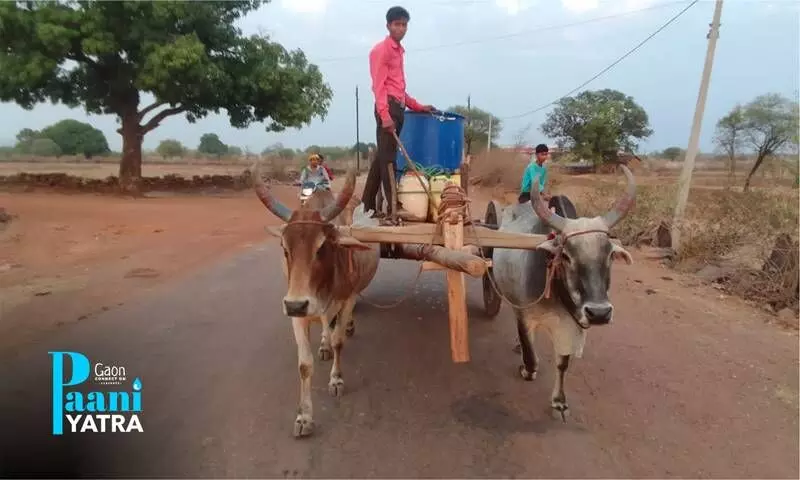
Panna district fares somewhere at the bottom as far as tap water coverage in the central Indian state is concerned.
“What can we do? There is no other source of drinking water available to Bilhata,” said Thakurdin Gond, another village resident.
As the mercury rises across the country and a heatwave grips large parts of India, the struggle for water has intensified. The situation is worse in the tribal villages located in and around the forests, as a large number of them lack drinking water sources, which forces their women and children to long distances to fetch water.
Also Read: A Midsummer Pipe Dream: Pipelines laid down and taps installed, but where is the water?
As part of Gaon Connection‘s series – Paani Yatra – our national team of reporters and community journalists travelled to remote villages in different states of the country to document how rural citizens are meeting their water needs in the heatwave conditions.
This story from the tribal villages inside the Panna Tiger Reserve in Madhya Pradesh is the third in the series.
Panna district fares somewhere at the bottom as far as tap water coverage in the central Indian state is concerned. According to the data of the Jal Jeevan Mission, as of today, May 16, 2022, the total coverage of tap water supply in rural Madhya Pradesh is 40.50 per cent. In Panna district, tap water coverage of rural households is 15.56 per cent only.
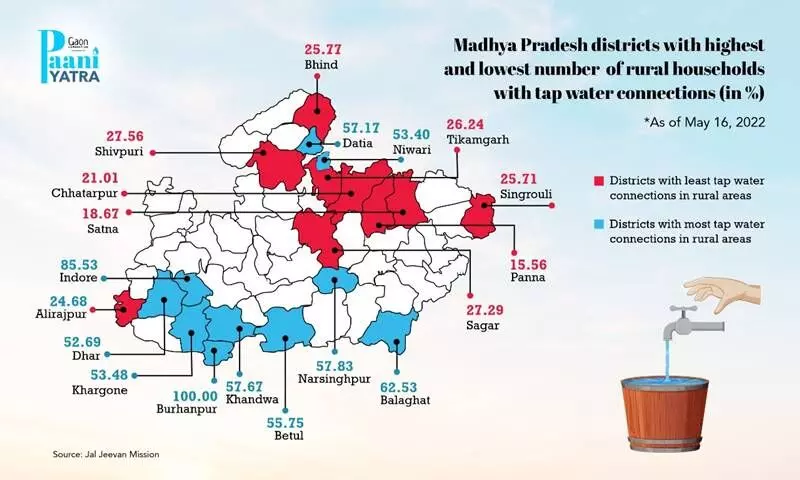
At an all India level, 49.36 per cent rural households in the country have tap water connections. The lowest coverage is in Uttar Pradesh at 13.65 per cent, followed by Jharkhand at 19.88 per cent, Chhattisgarh at 22.76 per cent, West Bengal (22.90 per cent) and Rajasthan (24.39 per cent).
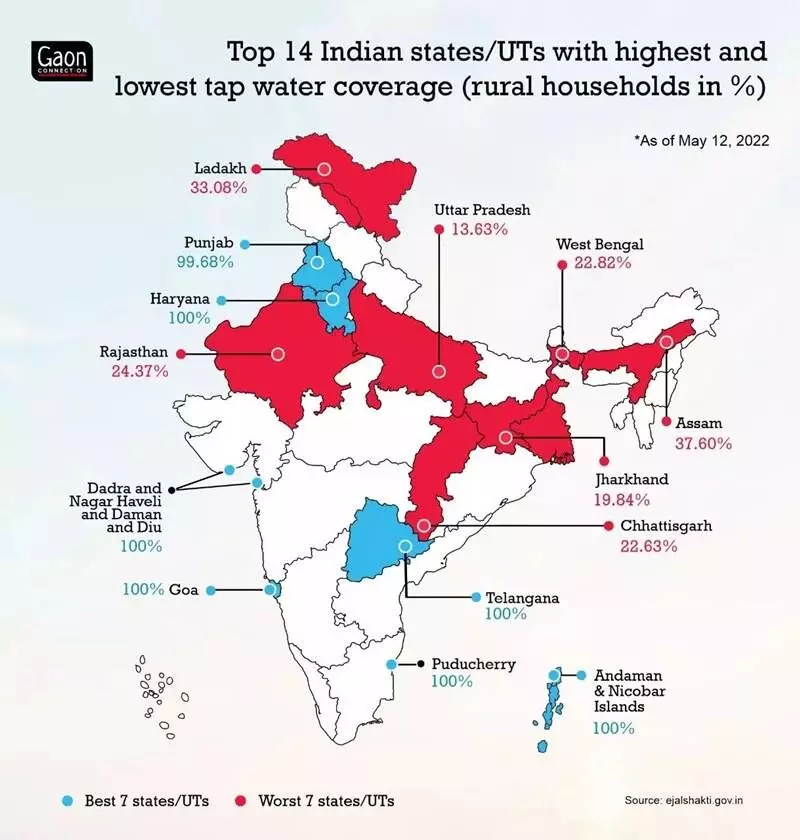
Water-sharing with the wild animals
The 300-odd tribal villagers of Katahari depend on the same hundred-feet-deep jhiriya from which 400 residents of Bilhata fetch their water. Katahari has a handpump but the water it dispenses is too dirty to consume, complained the inhabitants.
“There is always the danger of encountering a tiger, leopard or a bear when we go to collect water,” Kesarbai of Katahari told Gaon Connection. “That is one reason we never go alone. We are always in a group of eight to ten people who go together,” the 35-year-old explained.
The villagers have no other option but to watch out for each other. “The wild animals usually gather at the water source at dawn or at dusk and we know well not to go there then. We go well after the sun is up. We have an understanding with the animals, and avoid clashes with them,” Baiju Adivasi, told Gaon Connection.
The situation is similar at Koni village with its approximately 500 tribal inhabitants. They too depend on the jhiriya for their water needs. The jhiriya, according to forest officials, has water throughout the year, and both humans and animals partake of it from the same source.
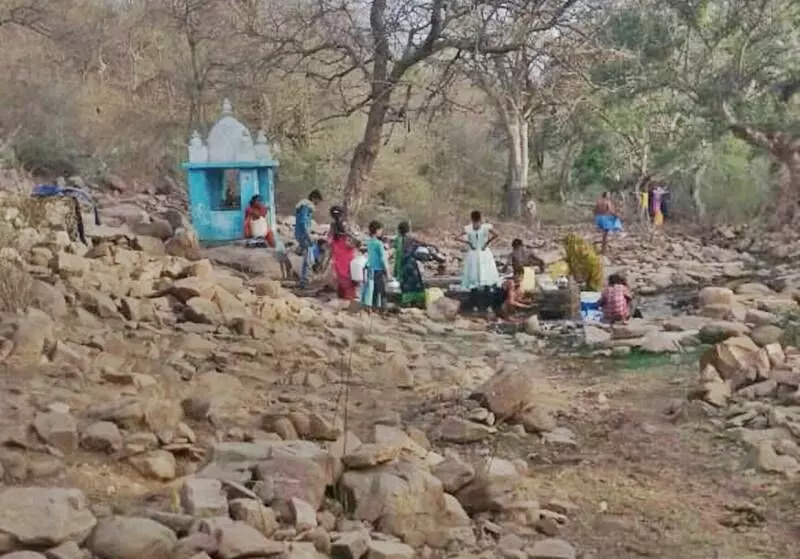
Women from the forest-dwelling communties in Panna’s Bilahta vilage have to climb down about 100 feet to fetch water from this ‘jhiriya’ — a small brook flowing through the forest.
Ken-Betwa project, a roadblock
Situated in the Vindhya mountain range in north Madhya Pradesh, Panna Tiger Reserve is spread over Panna and Chhatarpur districts. The terrain here consists of extensive plateaus and gorges. This reserve contains the last remaining tiger habitat of North Madhya Pradesh, notes WWF India.
Flowing from the south to the north through the reserve is the River Ken, one of the 16 perennial rivers of Madhya Pradesh. The reserve along with Ken Gharial Sanctuary form a significant part of the catchment area of Ken.
The Ken-Betwa link project is cited as one of the reasons behind the plight of the tribal villagers of Bilhata, Katahari and Koni who have to risk their lives to fetch water (see map: Forest villages inside Panna Tiger Reserve).
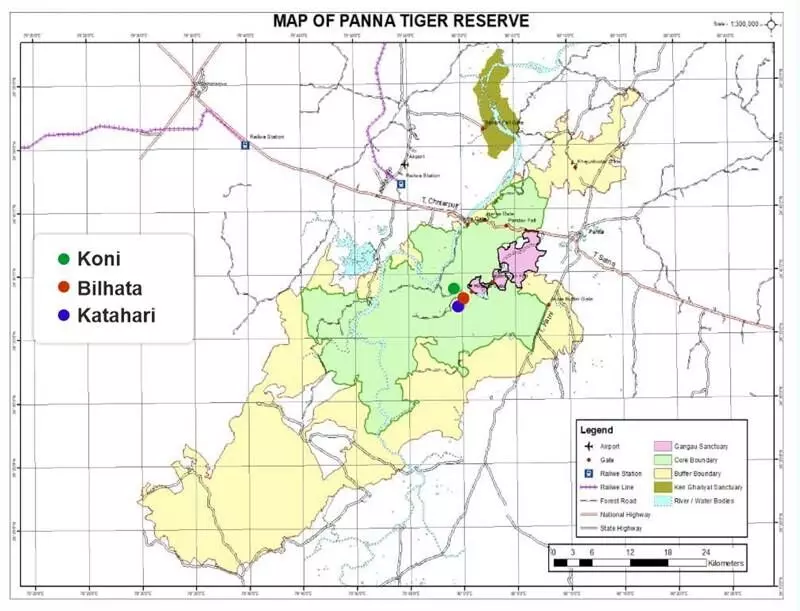
Source: https://www.pannatigerreserve.in
On being contacted, Area Director of Panna Tiger Reserve, Uttam Kumar Sharma, told Gaon Connection that “in the Ken-Betwa link project, in lieu of the area of the Tiger Reserve that is proposed to be submerged, the government has to give 4,300 hectares of revenue land. This includes the land of Kathari, Bilhata, and Koni villages, in addition to 12 more villages in the region.”
According to him, these villages have to be relocated because unless and until Panna Tiger Reserve gets 4,300 hectares of revenue land, the work of the Ken-Betwa link project cannot begin. This indicates why development projects are yet to start in these villages.
Also Read: “We eat roti with salt”: High inflation has shrunk the food basket of rural Indians
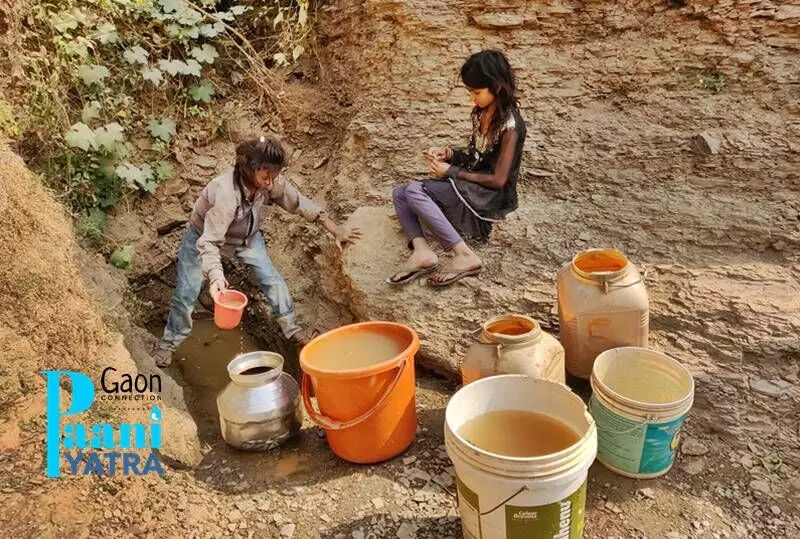
The water crisis in Madhya Pradesh’s Panna has forced rural residents to fetch water from unhygienic sources.
The Rs 44,605 crore link project will connect the Ken and Betwa rivers in the drought-prone Bundelkhand region and is expected to benefit people living in 10 districts across two states: Banda, Mahoba, Jhansi, and Lalitpur in Uttar Pradesh; and Tikamgarh, Panna, Chhatarpur, Sagar, Damoh, and Datia in Madhya Pradesh.
But the project is being strongly opposed by environmentalists who claim that linking of the two rivers will destroy the local ecology and also affect the tiger reserve. According to them, the lifeline of Bundelkhand, the Ken river, is already drying up. The water flow has slowed down and the rocky outcrops in the river that are usually submerged are now exposed.
Heavy and indiscriminate sand mining in the Ken river has caused further problems to the villages located on its banks. Those who earn their living ferrying boats, fishing and doing cultivation on the river banks are severely impacted.
Last December, the Ken-Betwa link project was approved by the Union Cabinet.
Meanwhile, women in the water-strapped villages of Panna bear the brunt of the problem. “With the wells and the handpumps giving up, we are lugging water all the way from the fields from the borewells, and it takes us all day to collect, transport and store the water,” Indramani Pandey, a 71-year-old inhabitant of Silgi village, outside the Panna tiger reserve, said in exasperation to Gaon Connection.







